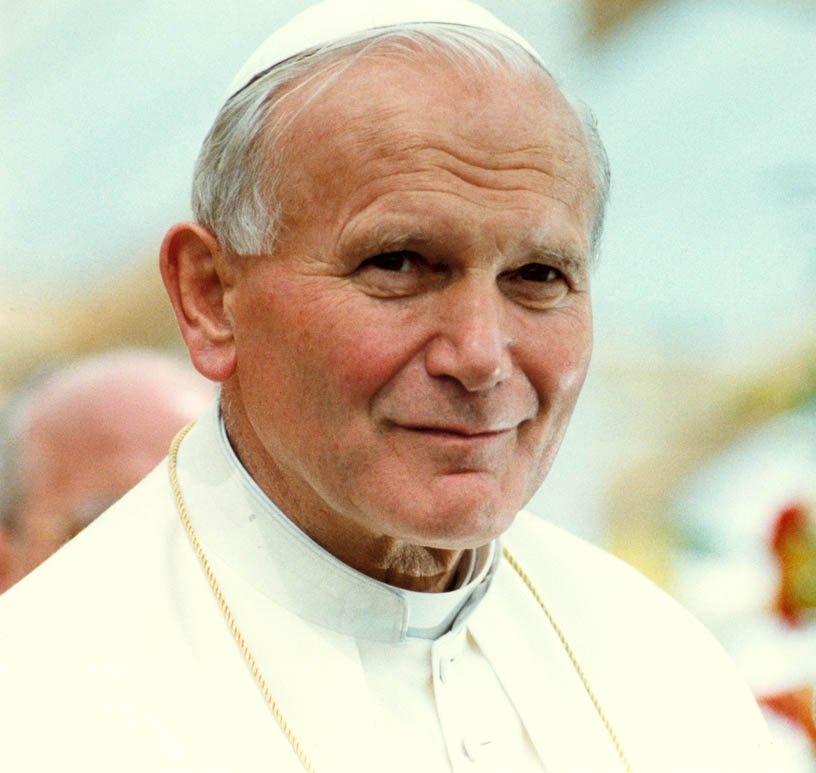CATHOLIC AUTHORS ARE NOT “PRESUMING
CHARITY” TOWARDS TRADITIONAL CATHOLICS
As Catholics we are all called to Charity.
The question of “presuming charity” from Catholic authors arose from a Twitter thread about an article in the Church Life Journal:
The article caught my eye because I wrote a piece for CA last summer on the use of the Latin Eucharistic prayer from the Novus Ordo Missae during the Papal Mass in Edmonton, Canada. It discusses several Papal responses to the continued use of the Traditional Latin Mass [TLM].
I scanned the long article and my first impression was that it was rather condescending. (One could even say scathing in places.) A Twitter response to my comment of “condescending” was more supportive of the authors! “…not condescending if read presuming charity (as one should given the authors.) …but they’re not wrong.” That got me thinking as to how we can attribute certain authors with positive virtues — and assume that they are writing charitably.
Catholic Stewardship
As part of our stewardship, we should assess all Catholic articles on face value — no preconceptions as to the intent of the author!
We should be vigilant for that rare opinion from a Catholic source which directly conflicts with basic Catholic Theology. (One such opinion was the catalyst for my first CA article Abandoned Embryos and the Ethics of IVF because of an opinion in “Moral Meltdown: A Magisterial View of the Morality of Embryo Adoption.”) Also, we should look for important aspects which may have been glossed over or missed entirely.
DISCLAIMERS
The last TLM I attended was pre-Vatican II reform — probably ~1969! (Sadly yes, I am that old!)
I love Mass in English and gravitate to a simple reverent, respectful Mass with joyous music & song.
My comments below are made without formal Theological training: just what we get in the pews.
SEDEVACANTISM
(Sede = Seat of Peter. Vacantism = being vacant.)
Sedevacantists believe that the Novus Ordo Missae is invalid. That is bad, but it gets much worse. They rationalize that because the NOM “is invalid,” the Magisterium who support the NOM are “promoting heresy,” ergo “All the Popes since Vatican II are invalid.” That belief is schismatic.
The added problem is that not all who attend the TLM are Sedevacantists. Many good Catholics are going also.
Traditionis Custodes [TC] attempts to deal with this growing problem and it makes exception for the faithful Catholics who are devoted to the TLM.
THE PAPAL RESPONSES ARTICLE
The authors, Professor John Cavadini; Professor Mary Healy; Thomas Weinandy OFM strongly support the liturgical changes of Vatican II and evidently feel that the TLM should not be used — EVER!
The logical problem with their position is that the TLM is still a valid Mass of the Catholic Rite. Surely then, it is the baptismal right of every Catholic to attend?
Pope Benedict XVI
“Although Benedict cannot be faulted for his loving pastoral concern for the faithful who wish to participate in the pre-Vatican II liturgy, it may be questioned whether such benevolence was wise.”
“...cannot be faulted” while faulting him in the same sentence. Yowzer!
“Benedict’s accommodation of the Tridentine liturgy, while pastorally motivated, undercut the fundamental principle of the liturgical renewal…”
Looks like the belittling of a Papal pastoral response with the aim of undercutting his decision.
“Although Pope Benedict would not interpret his actions in this light, one could conclude that he was attempting to make the best of a pastoral situation that was objectionable from the outset.”
So, these authors have clairvoyance which allows them to know how Pope Benedict XVI would interpret his own actions? Just…wow.
Pope John Paul II
“Significantly, John Paul sees himself addressing a pastoral “problem,” not encouraging and supporting a development that he wishes to bless.”
“...Again, John Paul responded pastorally to the situation that now confronted him.”
Again, negating Pope John Paul II’s decision as just a pastoral response to a ‘pastoral problem.’
Pope Francis
“Although Traditionis Custodis addresses legitimate concerns, it does so in a way that many perceived as less pastoral in approach than it could be, and therefore not as helpful as it could have been in fostering the desired end of liturgical and ecclesial unity.”
Now the authors complain that TC was “less pastoral” after belittling the pastoral approaches of Benedict and JPII.
Conflicting Papal Instruction
The authors note the radically conflicting guidance the Laity has received from the Popes about the TLM. It must be comforting for traditional Catholics to attend a predictably reverent Mass, rather than go to one which could be presented like a Disney production.
The TLM
“Although one can empathize with these concerns, we believe that a return to the Tridentine Mass is liturgically unfortunate and doctrinally unacceptable.”
The authors do not explain exactly how a valid Mass of the Catholic Rite can possibly be “doctrinally unacceptable.”
“...such a return is contrary to the entire Spirit-anointed liturgical renewal that culminated in Vatican II’s Constitution on the Sacred Liturgy.”
Are the authors claiming they can discern who will — or will not — be anointed by the Holy Spirit? We are all on the same team and all aiming for the same goal — even the Sedevacantists! (Just they do not approve of the current ‘captain.’)
“Moreover, to return to the unreformed rite is to return to a rite that systemically, and not simply as an abuse, positioned the faithful as “silent spectators.” It is to revert to a more limited and less adequate ecclesiology…”
Now claiming that the TLM is an abuse of the faithful. Low blow.
Non-Abrogation of the TLM
“It is true that the 1962 Missal promulgated by John XXIII was “never abrogated.” However, such a statement disregards the reason Vatican II never abrogated what is now termed the “extraordinary form,” which is that the Council was reforming the rite with the intention that it would no longer be celebrated in its older form.”
Whatever: the TLM is not abrogated — but the authors are adamant it should not be used. So they know better than at least 3 of the last 4 Popes? (Pope John Paul I was Pope for only 33 days.)
TLM attendees
If the authors were writing with Charity they would have validated the great affection of the traditional Catholic for the TLM.
Some condemn the TLM for not being in the vernacular language, yet we are allowed to say the NOM in Latin. This is an easy accusation of hypocrisy.
Silent Catholics
“... for the faithful who now attend that liturgy have little opportunity for active participation.”
“However, a purely silent, passive participation does not correspond to the reality of human nature as inseparably corporeal-spiritual, nor to the biblical and traditional understanding of worship as involving both interior acts and their outward expression in word, gesture, and song.”
The authors write as if the only way to participate in the Mass is through active participation. That is good for many — but some Catholics participate silently and should not be forced to do otherwise. Prayer is between the person and God alone.
(Catholic University of America)
Minimization of Liturgical Abuse
“Because of the rather chaotic manner in which the liturgical reform [Vatican II] was implemented, and particularly because of deviations and irregularities perpetrated by some priests, the desire gradually grew among some priests and faithful to return to Tridentine Mass (often called the Traditional Latin Mass).”
“This is the case even if the revised rite has suffered abuses during its implementation.”
Some years ago my local parish had its first (and I think only) liturgical dance on Good Friday. Really? Good Friday??
Absolutely, parishes must tailor the Liturgy for their congregation, such as including traditional spiritual music for an African-American congregation. That said, it is hard to watch dancing priests, amongst other more serious Liturgical abuses.
One can find many videos on post-Vatican II Liturgical abuses. Some examples:
https://www.youtube.com/watch?v=Uxk_1FJFfGA
https://www.youtube.com/watch?v=ni5uC3fYWYg
CONCLUSION
I hope this validly shows why I dislike the general attitudes expressed in the Papal Response article — especially those directed to Popes JPII, Benedict XVI and Francis.
Please pray that all Sedevacantists recant their position.
The Church is always evolving. Charity will help us move from where we are, to where we need to be. Everybody — including traditional Catholics — need to be on that journey of salvation.
Kevin Hay
(You can follow Kevin on Twitter at @kevinhay77)









